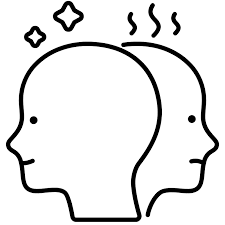Bipolar disorder, also known as manic depression, is a mental health condition that affects millions of people worldwide. It is characterized by extreme mood swings, ranging from episodes of intense mania or hypomania to periods of deep depression. However, selecting the right medication for an individual’s symptoms can be a complex process. In this blog, we will explore some bipolar first line treatment options, and how they can help individuals manage their symptoms and improve their quality of life.
Bipolar disorder is a mental health condition characterized by extreme mood swings between periods of high energy and euphoria (mania or hypomania) and periods of depression. It affects approximately 1-2% of the population and typically begins in late adolescence or early adulthood. The exact cause is not known, but it is believed to be a combination of genetic and environmental factors. Treatment typically involves medication, therapy, and lifestyle changes.
Factors Deciding Level Of Treatment
The level of treatment for bipolar disorder can depend on several factors, including:
- Severity of overall symptoms
- Symptoms of the current episode
- Response to previous treatment
- Co-occurring conditions
- History Of Side-effects
- Patient/Family Preference
- Availability Of Medicines
The primary goal of treating bipolar disorder is to stabilize mood and prevent episodes of mania or depression. Treatment plans are tailored to the individual’s needs and may include a combination of medication, therapy, and lifestyle changes. First-line treatments are the treatments that are typically prescribed first, before considering other options. Let’s take a closer look at the first-line treatments for bipolar disorder.
Bipolar Disorder First Line Therapies
Given below are psychotherapies that are delivered to patients along with first-line medication treatment:
Cognitive-behavioral therapy (CBT)
This type of therapy helps patients identify and change negative thoughts and behaviors that contribute to their bipolar symptoms. CBT can help patients learn coping strategies to manage stress and reduce the risk of relapse. For example, patients may learn how to recognize negative thought patterns and reframe them more positively.
Psychoeducation

Psychoeducation is a key step in bipolar first line treatment. This type of therapy involves educating patients about bipolar disorder, including symptoms, triggers, and treatment options. Psychoeducation can help patients better understand their condition and develop coping strategies. Patients may learn how to identify their triggers and warning signs of relapse, as well as strategies for managing symptoms.
Family-focused therapy (FFT)
This type of therapy involves the patient’s family members in treatment to help improve communication, reduce conflict, and support the patient’s recovery. FFT can help patients build a support network and develop coping strategies to manage their symptoms. Family members may learn about bipolar disorder and how to support their loved one’s recovery.
This type of therapy focuses on helping patients establish regular daily routines and improve interpersonal relationships to reduce the risk of relapse. IPSRT can help patients develop a stable routine to manage their bipolar symptoms, including sleep, exercise, and diet. Patients may also learn how to improve their interpersonal relationships and reduce stress.
Mindfulness-based interventions
This type of therapy teaches patients mindfulness techniques to help them manage their bipolar symptoms and reduce stress. Patients may learn techniques such as meditation, breathing exercises, and body awareness. Mindfulness-based interventions can help patients develop a greater sense of self-awareness and learn to regulate their emotions.
Psychodynamic therapy
This type of therapy helps patients explore and understand the underlying emotional issues that contribute to their bipolar symptoms. Psychodynamic therapy may focus on the patient’s past experiences and relationships to help them gain insight into their current symptoms. Patients may learn to identify patterns in their behavior and develop strategies for managing their symptoms.
First-Line Medication For Bipolar Disorder
Here are some first-line medications for bipolar disorder:
Lithium
 Lithium is considered the gold standard for mood stabilization in bipolar disorder. It works by altering the levels of certain neurotransmitters in the brain, which helps stabilize mood and prevent mood swings. Lithium is effective in treating both manic and depressive symptoms, and can also reduce the risk of suicide. However, lithium requires careful monitoring of blood levels to prevent toxicity, and can have side effects such as hand tremors, weight gain, and thyroid problems.
Lithium is considered the gold standard for mood stabilization in bipolar disorder. It works by altering the levels of certain neurotransmitters in the brain, which helps stabilize mood and prevent mood swings. Lithium is effective in treating both manic and depressive symptoms, and can also reduce the risk of suicide. However, lithium requires careful monitoring of blood levels to prevent toxicity, and can have side effects such as hand tremors, weight gain, and thyroid problems.
Valproate
Valproate is another mood stabilizer that is commonly used to treat bipolar disorder. It works by increasing the levels of a neurotransmitter called GABA, which has a calming effect on the brain. Valproate is effective in treating manic episodes, and may also help prevent depressive episodes. It can have side effects such as weight gain, hair loss, and liver problems.
Lamotrigine
Lamotrigine is an anticonvulsant medication that is also used as a mood stabilizer for bipolar disorder. It works by modulating the levels of glutamate, an excitatory neurotransmitter in the brain. Lamotrigine is particularly effective in treating depressive symptoms, and may also help prevent relapses into depression. It has few side effects but can cause a serious skin rash in some people.
Second-generation antipsychotics
Second-generation antipsychotics are a newer class of medications that are also used as first-line treatments for bipolar disorder. They work by blocking the activity of dopamine and other neurotransmitters in the brain, which can help reduce symptoms of mania and psychosis. They are particularly effective in treating acute manic episodes, and may also help prevent relapses. However, they can have side effects such as weight gain, metabolic problems, and movement disorders.
Benzodiazepines
Benzodiazepines are a class of medications that are commonly used as sedatives or anxiolytics. They can be used as an adjunctive treatment for bipolar disorder, particularly for the acute treatment of anxiety or insomnia. However, they can be habit-forming and can cause drowsiness and cognitive impairment.
Lifestyle Changes For Treatment
 Lifestyle changes can be an important part of treatment for bipolar disorder. Here are some lifestyle changes that may be beneficial for individuals with bipolar disorder:
Lifestyle changes can be an important part of treatment for bipolar disorder. Here are some lifestyle changes that may be beneficial for individuals with bipolar disorder:
- Regular sleep schedule: Maintaining a regular sleep schedule can help regulate mood and reduce the risk of mood episodes. Patients should aim for 7-8 hours of sleep per night and try to go to bed and wake up at the same time every day.
- Exercise: Regular exercise can help reduce symptoms of depression and anxiety and improve overall physical health. Patients should aim for at least 30 minutes of moderate exercise per day.
- Healthy diet: Eating a balanced diet with plenty of fruits, vegetables, whole grains, and lean protein can help improve overall health and reduce the risk of mood episodes. Patients should try to limit processed foods, sugary drinks, and alcohol.
- Stress management: Managing stress is important for individuals with bipolar disorder, as stress can trigger mood episodes. Patients may benefit from relaxation techniques such as meditation, deep breathing, or yoga.
- Substance use: Substance use can interfere with medication efficacy and worsen symptoms of bipolar disorder. Patients should avoid using drugs or alcohol and seek help if they struggle with addiction.
- Support system: Building a support system of family, friends, or mental health professionals can help individuals with bipolar disorder manage their symptoms and stay on track with treatment.
Conclusion
In conclusion, Bipolar disorder can be a challenging condition to manage, but there are effective treatments available. Bipolar first line treatment options typically include mood stabilizers, antipsychotics, and antidepressants. In addition to medication, therapy can also be an important part of treatment. A combination of medication, therapy, and lifestyle changes can act as an effective bipolar first line treatment. It’s important for individuals with bipolar disorder to seek help from a mental health professional to develop a personalized treatment plan that addresses their unique needs and preferences.
For more information, please contact MantraCare. Bipolar disorder is a mental illness characterized by extreme shifts in mood, energy, and activity levels. If you have any queries regarding Online Bipolar Disorder Counseling experienced therapists at MantraCare can help: Book a trial Bipolar Disorder therapy session.



